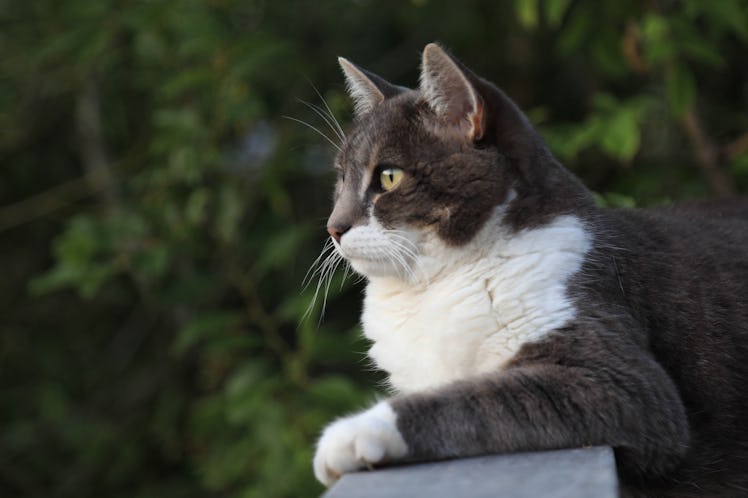Indoor Vs. Outdoor Cats? New Study Settles The Debate For Good
A new study finds that letting our cats roam free is dangerous for birds, wildlife, cats, and their owners.

A new study firmly puts a stop to the outdoor vs. indoor cat debate. Indoors, all the way. No exceptions — and for more reasons than you might think.
The study, published in the journal Frontiers in Ecology and Evolution, says letting our cats free-roam and go outside isn’t just bad for the birds — it’s also putting all sorts of wildlife, the cats themselves, and the owners in serious danger. Here’s what you need to know.
For the study, led by the University of Maryland, researchers kept tabs on domesticated cats and their interactions when free-roaming outside. Using a camera trap survey with 60 motion-activated wildlife cameras spread across 1,500 sampling locations, researchers found that cats interacted with several wild animals that jeopardized their own health.
“We discovered that the average domestic cat in D.C. has a 61% probability of being found in the same space as raccoons — America’s most prolific rabies vector — 61% spatial overlap with red foxes, and 56% overlap with Virginia opossums, both of which can also spread rabies,” said Daniel Herrera, lead author of the study and Ph.D. student in UMD’s Department of Environmental Science and Technology (ENST). “By letting our cats outside, we are significantly jeopardizing their health.”
But cats putting themselves at risk of a bad outcome isn’t the only thing the researchers discovered. When cats are in high-risk exposure areas for things like rabies or toxoplasmosis, their owners are also at risk of contracting those diseases.
The Cat Count survey also found that when outdoor cats would freely outside, they’d go to the same spaces as the small wildlife like rabbits, squirrels, and mice. Not only does this increase their chance of disease and ours, but it’s been bad for the ecosystem.
“Since humans largely influence where cats are on the landscape, humans also dictate the degree of risk these cats encounter and the amount of harm they cause to local wildlife,” Herrera said. Birds, rabbits, squirrels, oh my.
So, what should cat owners do? Herrera encourages cat owners to keep their pets indoors and avoid potential cross-over with native wildlife. It’s better for the cats, better for us humans, and better for the ecosystem, too. Perhaps an apology with Mittens will go a long way.
This article was originally published on